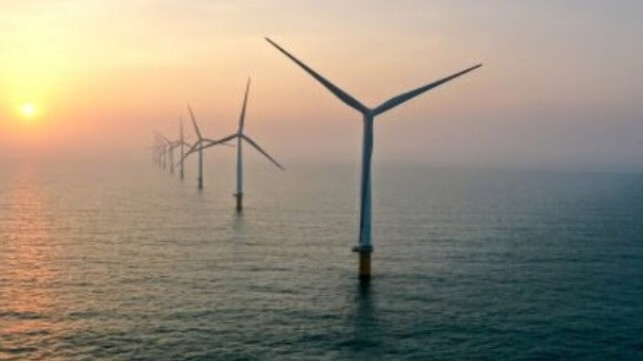California Adopts Target for 25 GW from Offshore Wind Farms

California’s primary energy policy and planning agency, the Energy Commission, moved forward on Wednesday, August 10, to adopt ambitious goals for California’s offshore wind energy sector. While the state has lagged behind the U.S. East Coast in the development of offshore wind power generation in part due to technical challenges, the new plan is a key step in moving the industry forward as the federal government also prepares for the first lease auctions for the California coast.
The state agency adopted a report establishing offshore wind goals and moving the state one step closer to the development of offshore wind energy ten days after the federal government concluded its comment period preparing for the first lease auctions. The Biden Administration is targeting the first auctions before the end of 2022 for lease areas that could provide an initial 4.5 gigawatts of electricity generated by offshore wind farms.
The federal effort however is only a small part of the development envisioned by the California Energy Commission (CEC). In a unanimous vote by the five-member agency, they set new goals of up to 5 GW by 2030 and 25 GW by 2045. Biden’s target for the country is 30 GW by 2030 nationwide.
“These ambitious yet achievable goals are an important signal of how committed California is to bringing the offshore wind industry to our state,” said CEC Chair David Hochschild. “This remarkable resource will generate clean electricity around the clock and help us transition away from fossil fuel-based energy as quickly as possible while ensuring grid reliability.”
The CEC developed the report in coordination with federal, state, and local agencies and stakeholders including fisheries and other ocean users. It is the first of several products the CEC must prepare to create a strategic plan for offshore wind energy development as required by the California legislature. According to the agency, "California is the home to some of the best offshore wind resources in the country," and they are moving to realize this potential.
The plan also takes wind energy a step further than the plans outlined by California governor Gavin Newsom. In May he wrote to the Chair of the California Air Resources Board (CARB) outlining steps he was calling for in the future energy policy. The governor stated a goal of at least 20 GW in 2045. A year earlier, the governor and the federal government reached an agreement for the first wind development zones offshore with over 95 percent of the proposed lease sale area located 20 to 30 miles off the California Coast. The governor also set out in his budget monies to begin developing a wind port at the Port of Humboldt on the northern California coast as well as for studies to support the development of the industry.
The topography of the Pacific coast presents one of the biggest challenges for California’s efforts to develop the offshore wind industry. Unlike the East Coast, the outer continental shelf drops off quickly along California meaning that the use of fixed bottom wind turbines is far more limited. California’s efforts with the federal government are focused on the use of emerging technologies for floating offshore wind platforms.
The federal proposed sale notice published in May 2022 by the Bureau of Ocean Energy Management includes three proposed lease areas in the Morro Bay Wind Energy Area off central California and two proposed lease areas in the Humboldt Wind Energy Area off northern California. Combined they propose a total of approximately 373,268 acres that BOEM says have the potential to unlock over 4.5 gigawatts of offshore wind energy, enough to power more than 1.5 million homes. The comment period closed on August 1 and will be used to finalize the details for the first lease auctions.
The CEC staff will next study the economic benefits of offshore wind in relation to seaport investments and workforce development needs. The staff will also create a roadmap to develop a permitting process for offshore wind energy facilities and associated electricity and transmission infrastructure. The entire plan must be submitted to the California Legislature by June 2023.
